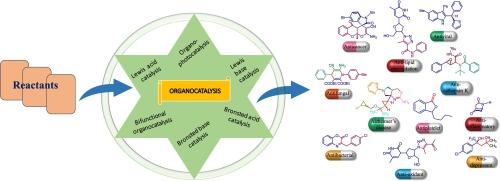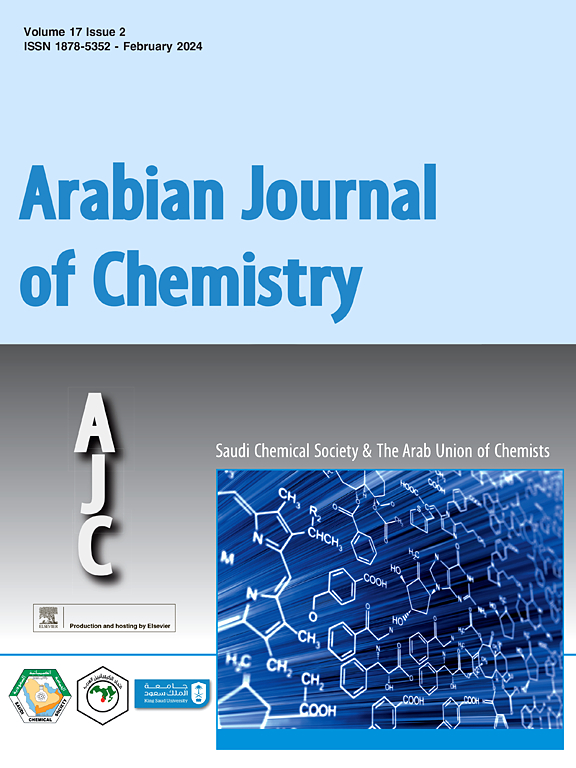Organocatalyst as a synthetic gadget for pharmaceutically potent molecules
IF 5.2
2区 化学
Q2 CHEMISTRY, MULTIDISCIPLINARY
引用次数: 0
Abstract
Organocatalysts have become a third main method of catalyzing chemical reactions aside from bio and metal catalysts. The potential for green chemistry and some striking benefits, including stability, low cost, easy availability, excellent enantioselectivity, and simple recovery, have made organocatalyzed reactions a fruitful approach. Recent developments in the field of organocatalysis include the enhancement of enantioselectivity, the development of novel catalyst classes such as NHCs, and dual catalysis, which combines organo- with metal or photocatalysis to enable novel reactivity. This review focuses on organocatalyzed chemical synthesis of pharmacophores such as benzoxazinones, pyrrolidines, triazoles, pyrazolinones, tricyclic coumarins, (+)-paroxetine, and (+)-femoxetine. The review has been outlined into six categories i.e. Lewis base catalysts, Lewis acid catalysts, Bronsted base catalysts, Bronsted acid catalysts, bifunctional catalysts, and organo-photocatalysts. Less reusability due to catalyst deactivation demands higher catalytic loading. Thus scalability in this field is still challenging. Moreover, achieving higher catalytic efficiency needs future efforts.

作为药效分子合成工具的有机催化剂
除生物催化剂和金属催化剂外,有机催化剂已成为催化化学反应的第三种主要方法。有机催化剂具有绿色化学的潜力和一些显著的优点,包括稳定性、低成本、易得性、优异的对映选择性和简单的回收,这些都使有机催化反应成为一种富有成效的方法。有机催化领域的最新发展包括提高对映体选择性、开发新型催化剂类别(如 NHCs)以及双重催化(将有机催化与金属催化或光催化相结合以实现新型反应)。本综述侧重于苯并恶嗪酮类、吡咯烷类、三唑类、吡唑啉酮类、三环香豆素类、(+)-帕罗西汀和(+)-非莫西汀等药原的有机催化化学合成。综述分为六类,即路易斯碱催化剂、路易斯酸催化剂、布郎斯泰德碱催化剂、布郎斯泰德酸催化剂、双官能催化剂和有机光催化剂。由于催化剂失活导致重复利用率较低,因此需要较高的催化负载。因此,该领域的可扩展性仍具有挑战性。此外,实现更高的催化效率还需要未来的努力。
本文章由计算机程序翻译,如有差异,请以英文原文为准。
求助全文
约1分钟内获得全文
求助全文
来源期刊

Arabian Journal of Chemistry
CHEMISTRY, MULTIDISCIPLINARY-
CiteScore
10.80
自引率
3.30%
发文量
763
审稿时长
63 days
期刊介绍:
The Arabian Journal of Chemistry is an English language, peer-reviewed scholarly publication in the area of chemistry. The Arabian Journal of Chemistry publishes original papers, reviews and short reports on, but not limited to: inorganic, physical, organic, analytical and biochemistry.
The Arabian Journal of Chemistry is issued by the Arab Union of Chemists and is published by King Saud University together with the Saudi Chemical Society in collaboration with Elsevier and is edited by an international group of eminent researchers.
 求助内容:
求助内容: 应助结果提醒方式:
应助结果提醒方式:


